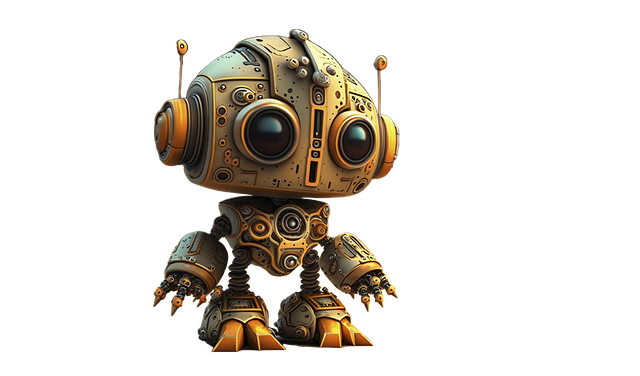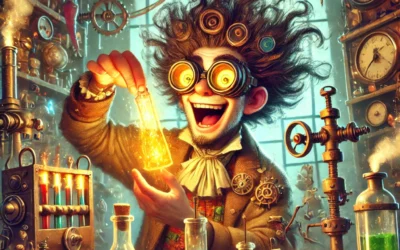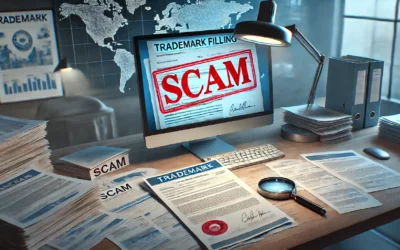Artificial Intelligence (AI) is revolutionizing the way we interact with technology. It allows us to perform complex tasks like never before. However, as AI technology continues to evolve and gain widespread adoption, it raises important questions about intellectual property, ownership of AI-generated outputs like texts, images, and even inventions. Who owns them? Are they protectable? What are the limitations, downsides, and risks?
Below are some of the legal implications for businesses that use AI technology and services like OpenAI’s ChatGPT and DALL·E 2. It is important to note, though, that these are only general comments, and there are still no universal answers to these questions. Different countries might consider some aspects differently. The below considerations are mainly based on EU practices and laws.
Copyright
Copyright protects the works of authors, most commonly written texts, musics, drawings, images, and so on.
Maybe the most important question is who owns the copyright to the text and images created by AI tools like Chat GPT. Generally, copyright requires original and creative output. Until now, computer programs have been used as tools (like paper and pencil) in bringing those human-created expressions to life, but they have only done what they have been told without independent creativity or decisions. In most countries, copyright can only be given to human-created works. This applies at least in most European countries and in the US. The US Copyright Office has specifically stated that only human-generated works enjoy copyright protection. This announcement was made after an incident in the Philippines where a monkey stole a camera from a nature photographer and took a selfie that went viral. The fact that the photo was taken by a monkey meant that the photographer in question, David Slater, could not collect royalties for the use of the photo. The photographer was not the copyright owner of the photo because he had not taken it. Also, the monkey in question was not the owner of the copyright because monkeys cannot be copyright owners. The Court of Justice of the EU has also confirmed that copyright arises only for human-generated works. Computer programs are not considered “authors” that could create protectable works.
Coming back to AI and ChatGPT, the text produced by ChatGPT is not copyright-protected because it is not created by a human. We posed the question of copyright protection to ChatGPT directly, and for a while, it was trying to argue that OpenAI owns the copyright for the text produced by ChatGPT.
It reasoned that because OpenAI made the code for ChatGPT, the text that is generated is a “collective work” (i.e., made together by OpenAI and their computer program). After a couple of rounds of arguments back and forth, I told ChatGPT that its legal assessment is plainly wrong, and at this point, it relented and said the following: “I apologize if my previous answer was not completely accurate. You are correct that simply creating the code for ChatGPT does not automatically make the text generated by the model a collective work under copyright law.”
Also, the fact that you pose the questions and maybe even direct ChatGPT to give a particular type of answer does not make you the author of the text. So, if you use text generated by ChatGPT, you cannot prevent others from using the same text.
This is different if you take ChatGPT’s text and make modifications and alterations. For example, the intro of this blog was first created by ChatGPT. It was then modified quite a bit to its present form in such a way that it is copyright-protected and cannot be used by others without permission.
Another copyright aspect is that if you use ChatGPT or a similar tool to create text (for example, blogs and social media posts), that text can infringe copyright of others. If you make the text available, you can be liable for copyright infringement. For this reason, it is always a good idea to run the text through a plagiarism detection site and make modifications to the text. This will enable you to claim copyright and reduce the risk of plagiarism.
Trademarks
Trademarks can be used to protect brand names of AI products and services. The fact that a particular service is provided with the help of an AI is not relevant for trademark purposes. If you have a website for booking concert tickets, it is not relevant for trademark purposes whether there is AI under the hood. It is still a concert ticket booking website, classified in class 41. Also, a cleaning robot using AI is still “just” a cleaning robot. The fact that it uses AI is not more important characteristic for trademark classification purposes than the colour of the robot or its noise level. Also, the names and logos of AI tools like ChatGPT can be trademarked.
We wrote an earlier blog post about ChatGPT and trademarks. ChatGPT and other AI systems can be used in many regards to assist in trademark related tasks. They are particularly good at inventing brand names and slogans. For that, they have practically unlimited capacity and imagination. When a name or slogan is invented by AI, it is just as important to make trademark searches as when the name was invented by a human. The names proposed by ChatGPT and other AI tools can infringe existing trademarks. Secondly, it is also possible that the names invented or proposed by AI will not be sufficiently distinctive. It is important to make a human assessment of the distinctiveness of the mark. As we said in our blog, ChatGPT is not good at assessing the distinctive character of a trademark, and it does not perform trademark searches.
ChatGPT can give very good general descriptions of various aspects of trademark law, but as we noted in our blog post, it sometimes gives completely false information. This means that you should probably not rely on AI to make important trademark decisions.
Patents
Patents protect innovation and inventions. For an invention to be patentable, it must be novel (new) and inventive (non-obvious).
It is possible to patent inventions relating to AI. Computer programs “as such” are not patentable under European Patent Office practice. Inventions involving software can be patented, if they have a technical character and satisfy the other requirements of patentability (inventive, novel and susceptibility of industrial application). In fact, the number of patent applications involving inventions relating to AI has skyrocketed in recent years. Many aspects of AI can be patented.
Perhaps the most burning question is whether an AI system can invent things that are patentable. In most countries there is a requirement that a patentable invention is made by a human. AI cannot be an inventor of a patentable invention. This view is taken, for example, by the United States Patent and Trademark Office as well as the European Patent Office and many other patent offices around the world.
Even though inventions made by AI cannot be patented, such inventions could probably prevent the patentability of the same invention made by a human inventor. If AI makes an invention and it is published, it would probably mean that nobody else could patent that invention. The human made invention would no longer be novel. Novelty (newness) is a requirement for a patentable invention.
AI can also be handy in many patent-related tasks, such as drafting patent claims, assessing the inventiveness of an invention or evaluating prior art. It is doubtful whether systems like ChatGPT could perform these tasks reliably. Also, an amateur is not capable of assessing the quality of work performed by services like ChatGPT when it comes to legal analyses or drafting patent claims.
AI could also be used to identify problems for which a human comes up with a solution (patentable invention).
Designs
Designs protect the appearance of a product. The requirement for design protection is novelty (must be new, not disclosed publicly) and individual character (must differ sufficiently from existing designs).
The EU design regulation does not place any requirements as to who makes the design. The EUIPO Guidelines state that “Whether the product claimed is actually made or used, or can be made or used, in an industrial or handicraft manner will not be examined”. EUIPO registers designs that are completely made by AI without any human input.
The fact that AI makes a design, does not on the other hand, make it automatically protectable. It may be, for example, that it lacks individual character, i.e. the overall impression it produces on the informed user does not sufficiently differ from the overall impression produced on such a user by any design which has been made available to the public. It is also possible that a design made by AI (whether protected or not), infringes on intellectual property rights of others. A design could infringe a prior trademark, copyright or other design. The party that commercialises the design is primarily liable for any infringements. It is not a valid defence to say that a computer made the design.
Other considerations
Use of outputs created by AI are subject to the terms of service of those AI tools or services that are used to generate them. It could be, for example, that an AI service can be used for generating text, but the terms of service prevents the commercial use of those texts. Same applies to drawings and other outputs.
Conclusion
If you develop AI products or services yourself, they can be protected by copyright (e.g. code), trademark (brand), patent (inventions with technical character) and designs (user interface). In other words, AI products and services can be protected like any other products and services.
As AI develops, it will be capable of independently creating assets that could enjoy intellectual property protection and also infringe other companies intellectual property. Currently intellectual property law can be used to protect trademarks and designs created by AI, but copyright and patent protection is not at the moment possible for works and inventions made solely by AI.



